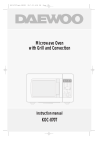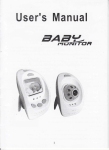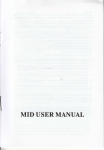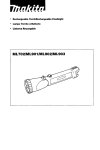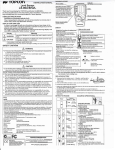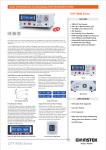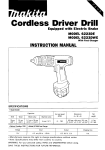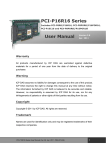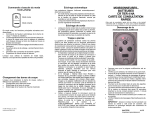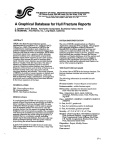Download Casio H-1 Instruction manual
Transcript
CASICJ H-1 Dear customer, Congratulations on your purchase of this electronic calculator. To utilize its full features no special training is required, but we suggest you study this instruction manual to become familiar with its many abilities. To help ensure its longevity, do not touch the inside of the calculator, avoid hard knocks and unduly strong key pressing. Extreme cold (below 32°F or QOC). heat (above 104°F or 40°C) and humidity may also affect the functions of the calculator. Never use volatile fluid such as lacquer thinner, benzine, etc. for cleaning the unit. For servicing contact the original store or nearby dealer. *For operational examples, refer to page 43.. CD 1/ NOMENCLATURE Power switch: . Move the switch forward to activate the calculator. I 0·1 Read-out: Shows each entry and result through a Digitron tube panel. suppressing unnecessary 0'8 (zeros}. c:J Numeral/Decimal point keys: Enter numerals. For decimal places, use thec:Jkey in its logical sequence. ill-en D, CI, ~, =, BFunction command/Result keys: Perform the four basic calculations when these keys are pressed in formula sequence. An incorrect function command ( D, CI, ~ or ~) is ·automatically cleared by pressing the correctfunction command key. TheBkey obtains answer after entering numerals and function commands. B< 8) Memory plus (minus) key: Transfers the number displayed to the memory positively (negatively). Obtains answer in four functions and automatically accumulates it into the memory positively (negatively). ~Memory recall key: Recalls the contents of the memory without clearing. OOPercent key: Performs percentage calculations, including add-ons, discounts and markups. tOSquare root key: Extracts the square root ofthenumber displayed. BClearkey: Clears entry for correction. . When pressed after a function cOfTlmand key, it clears the entire machine excapt the memory. rJ3AIl clear key: Clears the entire machine including the memory, and releases overflow or error check. r2..., F CUT 5/4 I .. I Decimal mode selector: At the "F" position, the decimal floats and the underflow system works to protect the significant digits. At the "CUT" position, an answer is automatically cut off at 2 decimal places, applying floating mode for entry and intermediate result. At the "5/4" position, an answer is rounded off in the same way as above. 2/BAlTERV MAINTENANCE This calculator operates on either dry batteries or AC (with an AC adaptor). @) DRY BATTERY OPERATION Two AA size manganese dry batteries (UM-31 give approximately 8 hours continuous operation (16 hours on type SUM-31. When battery power decreases, the whole display darkens. Batteries should then be renewed. Switch OFF the power, slide open the battery compartment lid on the back of the unit, remove dead batteries and insert new batteries with polarity as indicated. * Be sure to replace both batteries. * Never leave dead batteries in the battery box as they may cause malfunctions. * It is recommended that batteries be replaced once a year to prevent the chance of malfunctions due to battery leakage. AC OPERATION Use only an adaptor with the same voltage rating (100, 117, 220 or 240VI as your power supply to prevent component damage. Plug the AC adaptor into . the AC outlet and cord into the unit, this automatically cuts off battery power supply. ® ,,_ Jf 13I!1!B·· ! 1. __!:i3U * WHERE USED FROM THE MAINS THIS CALCULATOR MUST ONLY BE USED WITH A CASIO MAINS ADAPTOR. THIS IS DUE TO THE RISK OF DAMAGE TO THE CALCULATOR SHOULD IT BE USED WITH A MAINS ADAPTOR OTHER THAN A CASIO MAINS ADAPTOR. 31 OVERFLOW Overflow is indicated by the "En sign and stops further calculation. To release the overflow check, press the C3 key. Overflow occurs: a) When the integer part of an answer, whether intermediate of final, ex~ ceeds 8 digits (7 digits for negatives). However, the significant digits of the answer are given and the decimal point indicates that the true decimal position is 8 digits to the right. b) When the integer part of an accumulated total in the memory exceeds 8 digits (7 digits for negatives). ® 4/SPECIFICATIONS Abilities: Four basic calculations, constants for + I -I x I + , automatic accumulation in four functions, direct access to the memory, percentage calculations including add-onsl discounts and mark-ups, square roots and various kinds of practical calculations. Capacity: 8 digits including minus ( - ) sign. Read-out: Digitron tube panel, suppressing unnecessary O's (zeros). Decimal point: Full floating, or fixed with cut-off or round-off at 2 decimal place. Overflow check: Indicated by the "E" sign, locking the calculator. Main component: One chip LSI Power consumption: 0.2 W Power source: AC; 100, 117,220 or 240V (::l:: 10V), 50/60Hz, with an applicab'e AC adaptor. DC: Two AA size manganese dry batteries (UM-3) give approximately 8 (J) hours contin uous operation (16houts on type SUM-3) . Ambient temperature range: OOC - 40°C (32° F - 104°F) Dimensions: 19.7 mmH x 77 mmW x 136 mmO (3/4"H x 3"W x 5-3/8"0) Weight: 142 g (5 oz) including batteries. ® GUIDELINES LAID DOWN BY FCC RULES FOR USE OF THE UNIT IN THE U.S.A. (not applicable to othEirareas). This equipment generates and uses radio frequency energy and if not installed and used properly, that is, in strict accordance with the manufacturer's instructions, may cause interference to radio and television reception. It has been type tested and found to comply with the limits for a Class B computing device in accordance with the specifications in Subpart J of Part 15 of FCC Rules, which are designed to provide reasonable protection against such interference in a residential installation. However, there is no guarantee that interference will not occur in a particular installation. If this equipment does cause interference to radio or television reception, which can be determined by turning the equipment off and on, the user is encouraged to try to correct the interference by one or more of the following measures; ® · . . . . reorient the receiving antenna · relocate the computer with respect to the receiver · move the computer away from the receiver • •••• plug the computer into a different outlet so that computer and receiver are on different branch circuits. If necessary, the user should consult the dealer or an eXt:>erienced radio/television technician for additional suggestions. The user may find the followi l19 booklet prepared by the Federal Communications Commission helpful: "How to Identify and Resolve Radio-TV Interference Problems". This booklet is available from the US Government Printing Office, Washington, D.C., 20402, Stock No. 004-000-00345-4. CASIC. Printed in Japan 0130 OB @@@q@@. lmprime au Japaon












